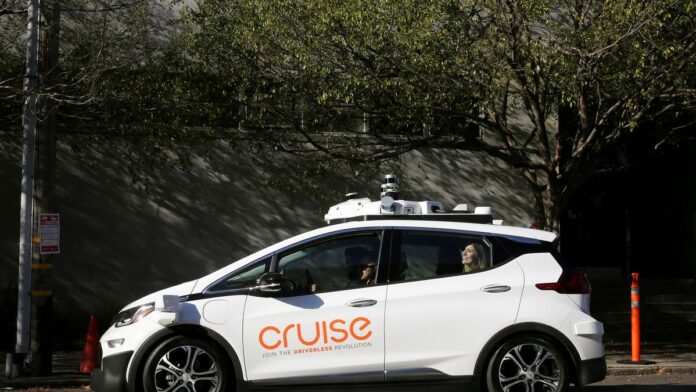General Motors’ self-driving car company Cruise is getting back on the streets, this time with a driver behind the wheel.
Cruise will resume its manual driving to create maps and gather road information in select cities, starting with Phoenix, the company announced Tuesday. This work will help train Cruise’s driverless systems, with the goal of ultimately returning to autonomous driving.
GM’s autonomous vehicle subsidiary suspended operations last October after one of its driverless cars dragged a pedestrian for roughly 20 feet after she had been knocked into its path by a human-driven car. Before the accident, which took place on Oct. 2, Cruise had been testing its robotaxis in Austin, Houston, Phoenix, and San Francisco. The California Department of Motor Vehicles also revoked Cruise’s license over safety concerns.
The next phase in renewing its fully autonomous offerings will be to redeploy driverless vehicles back onto public roads under supervision — in addition to the closed course and simulation training — to ensure they meet rigorous safety and performance requirements, the company said.
“The fleet learns from every intersection, construction zone, and road sign it encounters, and applies that knowledge to other environments and scenarios — much the same as a human driver learns, but with far more data and the ability to impart that continuous learning across the entire fleet,” it said.
Cruise said it has “maintained ongoing and extensive testing in complex, dynamic simulated environments and on closed courses, enabling continuous retraining and improvement” during its nearly six-month operational pause.
It also brought abroad new leadership, including a Ford and Apple veteran to be its new chief safety officer, as part of its efforts to regain public trust of its autonomous vehicles. Kyle Vogt, Cruise’s co-founder and CEO, and co-founder Dan Kan both stepped down in November amid heavy criticism of the company’s response to safety concerns. (The company also laid off about a quarter of its staff in December.)
A third-party report by the law firm Quinn Emanuel Urquhart & Sullivan published earlier this year found that reasons for Cruise’s failings following the Oct. 2 incident were “numerous.” It cited “poor leadership, mistakes in judgment, lack of coordination, an ‘us versus them’ mentality with regulators, and a fundamental misapprehension of Cruise’s obligations of accountability and transparency to the government and the public.”
This time around, Cruise is hoping to avoid those mistakes by improving its incident reporting procedures and internal safety governance processes.
“Safety is the defining principle for everything we do and will guide our progress through this process,” the company said.
Cruise’s operating loss totaled $3.48 billion in 2023. General Motors is planning to reduce the subsidiary’s expenses by about $1 billion to “slow the cash burn and align with a narrower focus in 2024,” it said in January.


